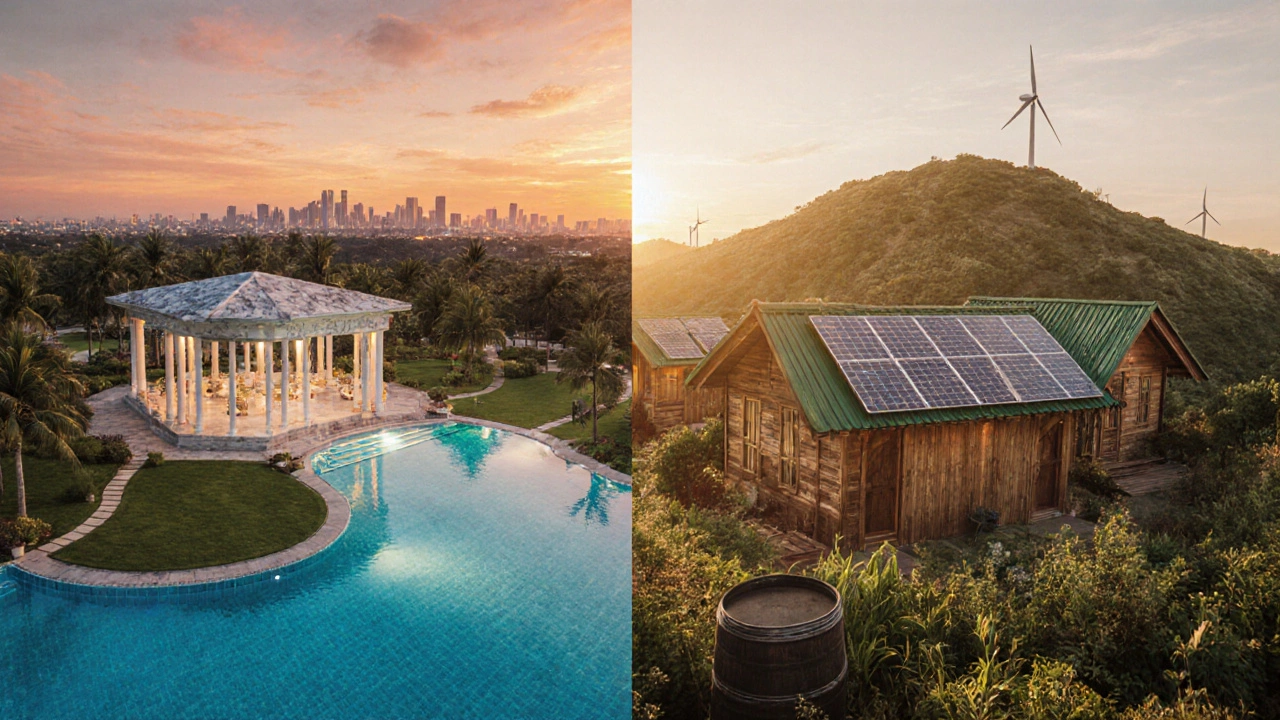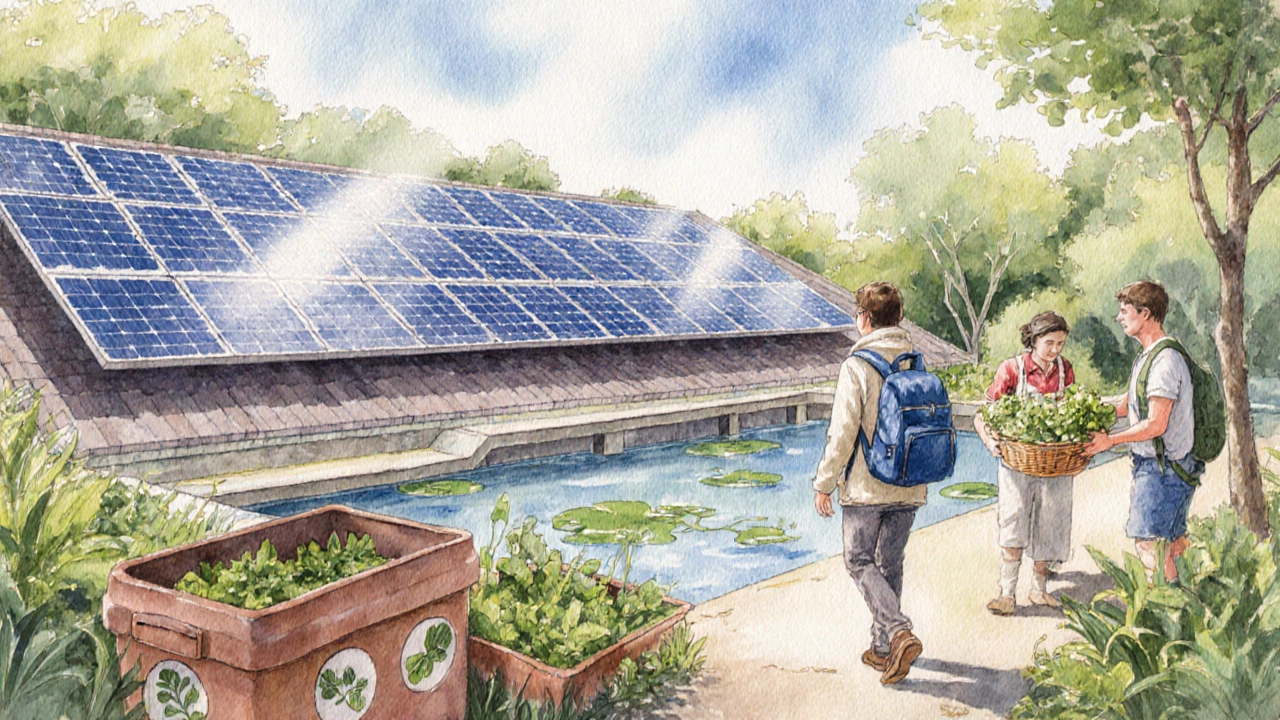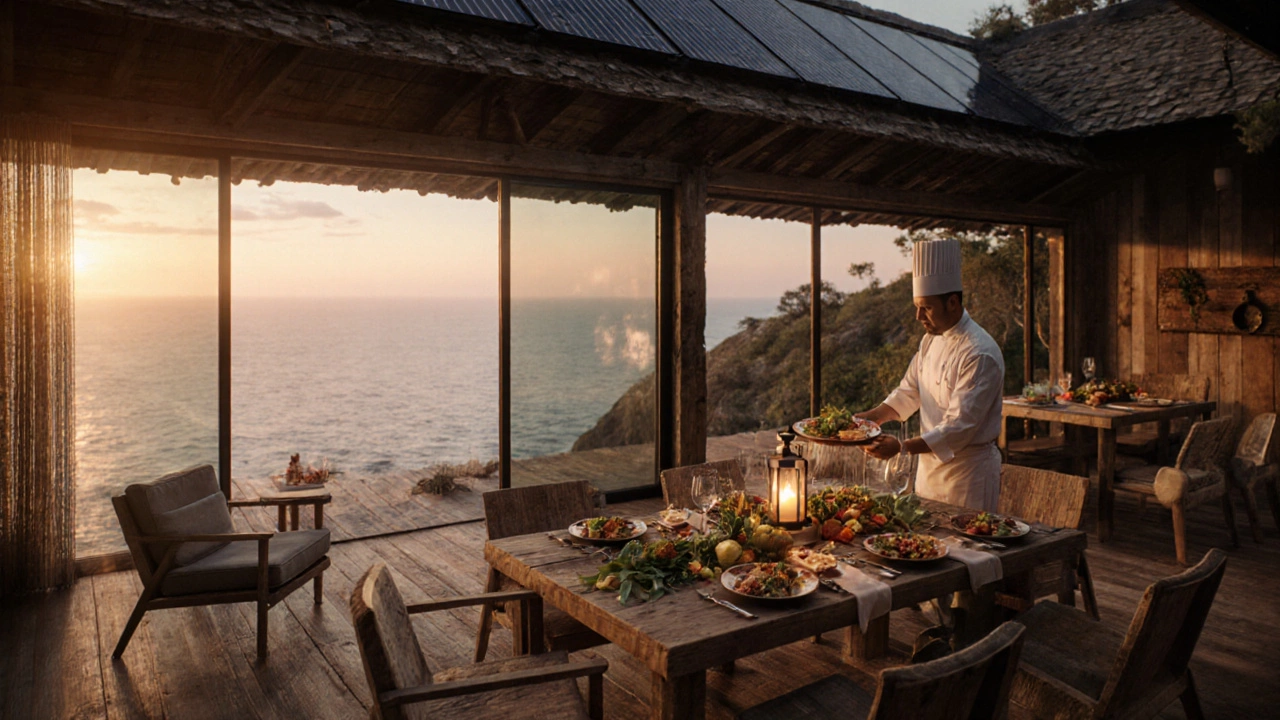Resort vs Eco Resort: Key Differences Explained
 Oct, 12 2025
Oct, 12 2025
Eco Resort Verification Tool
Eco Resort Verification Checklist
Use this tool to identify genuine eco resorts. Check the items that apply to the resort you're considering.
Key Takeaways
- Eco resorts embed sustainability into every aspect of design, operations, and guest experience, while traditional resorts focus mainly on comfort and amenities.
- Look for renewable‑energy systems, water‑saving tech, waste‑reduction programs, and community‑benefit projects to spot a genuine eco resort.
- Certification schemes such as LEED or Green Globe provide a reliable benchmark for environmental performance.
- Choosing an eco resort can lower your travel carbon footprint and support local economies without sacrificing luxury.
- Beware of green‑washing - not every “eco‑friendly” label means real sustainability.
Ever booked a beach getaway and wondered whether the property really cares about the planet? The line between a regular resort is a destination that offers lodging, dining, recreation and often all‑inclusive services aimed at relaxation and leisure and an eco resort can feel blurry. This guide pulls back the curtain, compares core traits, and gives you a cheat‑sheet for spotting the truly green spots.
What a Traditional Resort Looks Like
A classic resort is built to attract guests seeking convenience, entertainment, and often a touch of luxury. Think sprawling pools, on‑site restaurants, spas, and a staff that anticipates every need. The primary goal is revenue generation through high occupancy rates and premium ancillary services. While many resorts adopt water‑saving fixtures or LED lighting, those steps are usually cost‑driven rather than mission‑driven.
Design-wise, a resort often follows market trends - large lawns, golf courses, or beachfront villas - with little regard for local ecosystems. Energy comes from the grid, and waste is typically handled by municipal services. The guest experience emphasizes predictable comfort: room service, unlimited drinks, and a curated activity schedule.
Defining an Eco Resort
Eco resort is a lodging property that integrates environmental stewardship, social responsibility, and economic viability into its core business model. In practice, that means every decision - from site selection to daily housekeeping - is filtered through a sustainability lens.
Key characteristics include:
- Use of renewable energy solar panels, wind turbines, or geothermal systems that offset grid consumption.
- Water‑wise infrastructure such as rainwater harvesting, low‑flow showers, and grey‑water recycling.
- Zero‑to‑low waste strategies: composting organic waste, eliminating single‑use plastics, and partnering with recycling firms.
- Active participation with the local community through employment, sourcing food locally, and supporting cultural projects.
- Transparent certification third‑party validation such as LEED, Green Globe, or EarthCheck that verifies sustainability claims.

Core Differences in Detail
Below is a side‑by‑side look at the most telling contrasts.
| Aspect | Typical Resort | Eco Resort |
|---|---|---|
| Energy Source | Grid electricity, occasional backup generators | Solar panels, wind turbines, sometimes hybrid systems |
| Water Management | Standard municipal supply, basic low‑flow fixtures | Rainwater capture, grey‑water reuse, desalination where needed |
| Waste Handling | Landfill‑centric, recycling where mandated | Composting, zero‑single‑use plastics, partnership with local recyclers |
| Building Materials | Conventional concrete, imported finishes | Locally sourced timber, recycled steel, low‑impact concrete |
| Community Interaction | Occasional local tours, limited hiring of locals | Direct employment, profit‑sharing, cultural workshops |
| Guest Experience | All‑inclusive amenities, curated activity schedules | Educational nature walks, farm‑to‑table meals, volunteer options |
| Certification | Rarely pursued | LEED, Green Globe, EarthCheck, Rainforest Alliance |
Notice how the eco resort’s priorities directly address the planet’s hot‑button issues - energy, water, waste, and people.
How to Spot a Genuine Eco Resort
Travelers get bombarded with “green” labels, but not all of them hold up. Use this checklist before you click “book now”.
| Criterion | What to Look For | Red Flag |
|---|---|---|
| Energy | On‑site solar panels, wind turbines, energy‑monitoring dashboards | No mention of renewable sources, reliance on diesel generators |
| Water | Rainwater harvesting, low‑flow fixtures, water‑reuse system details | Only “eco‑friendly towels” without hard data |
| Waste | Composting program, zero‑single‑use plastic policy, recycling stats | Plastic bottles in minibars, no visible waste segregation |
| Local Sourcing | Menu notes showing farm‑to‑table sources, local artisan partnerships | All‑imported food and decor |
| Certification | LEED Platinum, Green Globe Gold, EarthCheck verified badge | Self‑awarded “green” badge without third‑party backing |
When a resort ticks most of these boxes, you’re probably dealing with a true eco resort.
Benefits of Choosing an Eco Resort
Going green while traveling isn’t a sacrifice - it adds value.
- Lower carbon footprint: Staying at a property powered by renewable energy can cut your travel‑related emissions by up to 30% (World Travel & Tourism Council, 2023).
- Support for local economies: About 70% of an eco resort’s food budget often stays within a 50‑km radius, keeping money in the community.
- Healthier environment: Reduced chemical cleaners and organic meals mean fewer allergens and toxins for guests.
- Authentic experiences: Guided nature walks, cultural workshops, and farm visits create deeper connections than a poolside cocktail.
- Future‑proof travel: As climate regulations tighten, properties with strong sustainability practices are less likely to face price hikes or closures.

Common Misconceptions About Eco Resorts
Myth #1: Eco resorts are always cheap. In reality, the added costs of green tech can push room rates slightly higher, but many properties offset this with inclusive experiences that give you more bang for your buck.
Myth #2: Luxury disappears. Brands like Soneva Fushi a high‑end resort in the Maldives that runs on renewable energy and offers zero‑waste dining prove you can have five‑star service and still be sustainable.
Myth #3: All “green” claims are legit. Green‑washing is rampant; that’s why third‑party certification matters.
Real‑World Examples to Inspire Your Next Trip
Here are three properties that consistently rank high in sustainability audits:
- The Brando a private island resort in French Polynesia with 100% solar power and a seawater air‑conditioning system.
- Lapa Rios a jungle lodge in Costa Rica that operates on a small hydro‑electric plant and runs a reforestation program.
- Alila Villas Uluwatu an Indonesian cliff‑side resort using reclaimed wood, solar water heating, and a community‑based cultural program.
Each property showcases how sustainability the practice of meeting present needs without compromising future generations can be woven into luxury, adventure, and local culture.
Next Steps for the Conscious Traveler
1. Identify your priorities - whether it’s zero waste, carbon neutrality, or community impact.
2. Use the verification checklist above while browsing booking platforms.
3. Look for certification logos and read the fine print.
4. When you arrive, ask staff about their sustainability initiatives - the best eco resorts love to share their story.
5. Share your experience online; positive reviews push more hotels toward genuine green practices.
Frequently Asked Questions
Is an eco resort always more expensive than a regular resort?
Not necessarily. While some eco resorts charge a premium for green technologies, many offset higher costs by offering inclusive experiences such as guided hikes, farm tours, or cultural workshops that add value without extra fees.
What certifications should I look for?
Globally recognized badges include LEED (Leadership in Energy and Environmental Design), Green Globe, EarthCheck, and the Rainforest Alliance Certified label. Each evaluates energy, water, waste, and community impact.
Can I still enjoy luxury amenities at an eco resort?
Absolutely. Many eco resorts combine high‑end spa treatments, gourmet cuisine, and designer interiors with sustainable practices. Luxury isn’t sacrificed; it’s re‑imagined.
How do eco resorts reduce water usage?
Typical measures include low‑flow showerheads (1.5gallons per minute), dual‑flush toilets, rainwater harvesting for irrigation, and grey‑water recycling that feeds plant irrigation or toilet flushing.
What’s the biggest environmental benefit of staying at an eco resort?
Reducing carbon emissions through renewable energy is often the biggest win. Combined with water conservation and waste diversion, the overall ecological footprint can be cut by 30‑50% compared with a conventional resort.